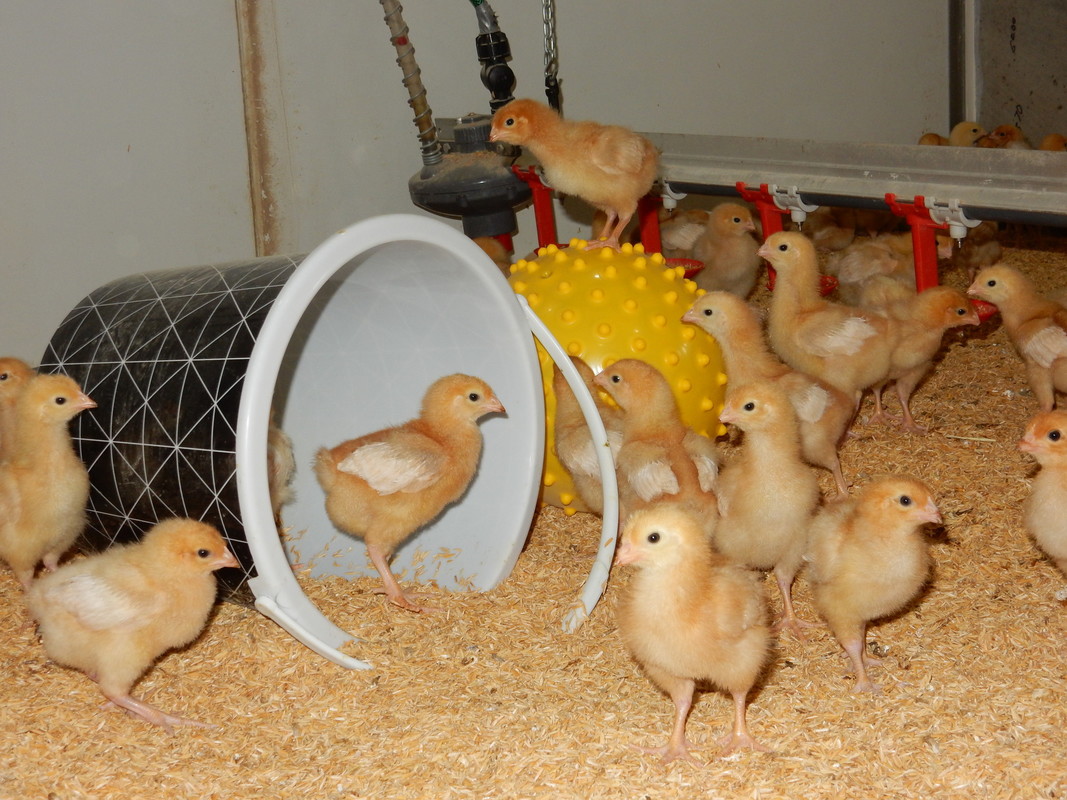Commercial laying hens provide us with a vital, staple protein – eggs. We are continually researching new strategies for optimising the way we house and care for them.
Our animal welfare team has recently wrapped up some large-scale trials conducted at experimental poultry facilities through the University of New England. The team also undertook work on commercial free-range farms around Australia.
Here’s a sneak ‘peck’ of our findings.

This looks fun! Play time for chicks enhances behaviour, health and welfare when they’re grown-up laying hens.
From playing to roaming
Free-range hens are reared inside but get to go outdoors to ‘range’ as adults. This discrepancy in environments between young and adult life stages could reduce the adaptability of adult hens to the outdoor ranging environment. It may also have behavioural, health and welfare consequences for the birds.
We found that ‘enriching’ the rearing environment of chicks makes for improved behaviour, health and welfare of free-range laying hens when they’re grown-ups.
We conducted a study where we exposed 1400 laying hen chicks to different types of ‘enrichments’. These were objects they’d never seen before like balls, buckets, ropes, strings, containers, plastic pipes, pet toys and children’s toys. The team changed the enrichments weekly over 16 weeks of rearing. We also had specialised cube-shaped perching structures with select opaque panels.
Observing the adults
When they became adults and started laying in the free-range system, we used radio-frequency identification technology and measured the individual daily time spent out on the range area. We took health and welfare measures throughout the hen’s laying lifetime. We also measured behavioural and physiological responses to an environmental stressor and conducted behavioural tests of fearfulness.
The hens we gave enrichments showed more ranging and better welfare. One noticeable factor was lower feather pecking, which is a concern across laying hen industries worldwide.
This research contributes to our understanding of individual bird behaviour, health and welfare in free-range systems. Rearing enrichments may be a strategy for optimising free-range production systems in Australia.

Free-range laying hens in a test outdoor range.
The eyes have it
Chickens are similar to us in that our childhood environments can affect our health and behaviour as adults. But one thing is very different to us – chickens see in the ultraviolet (UV) spectrum. This might be important in how they recognise other chickens.
Chickens also absorb UV radiation through their skin to synthesise vitamin D, just like us.
However, the harsh Australian summer, with its intense sunlight and high UV radiation, could be a stressor for hens with outdoor access. We measured whether chickens choose to go outside less when the sunlight is intense. We also put up protective shelters to minimise ultraviolet exposure.
For hens housed indoors, without access to a range area, UV supplementation could give them a more natural environment, with behavioural and health benefits.
Over the past two years we’ve been investigating how ultraviolet radiation can impact hens’ behaviour, health, and egg quality. The results will help us better understand what housing environments are best suited to hen preferences, welfare and performance.
This research has been supported by Poultry Hub Australia and Australian Eggs.
We know plenty about male chicks too.

